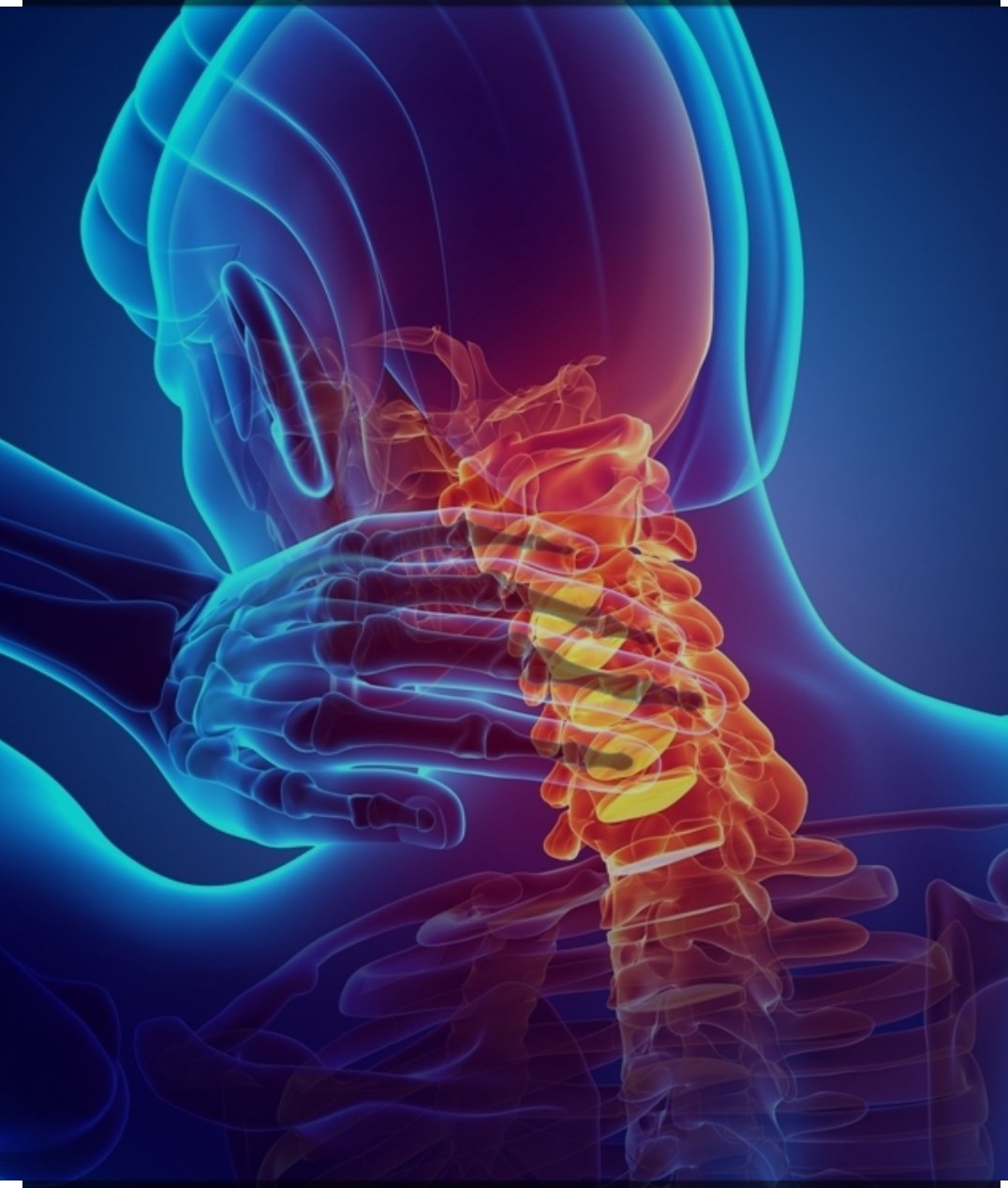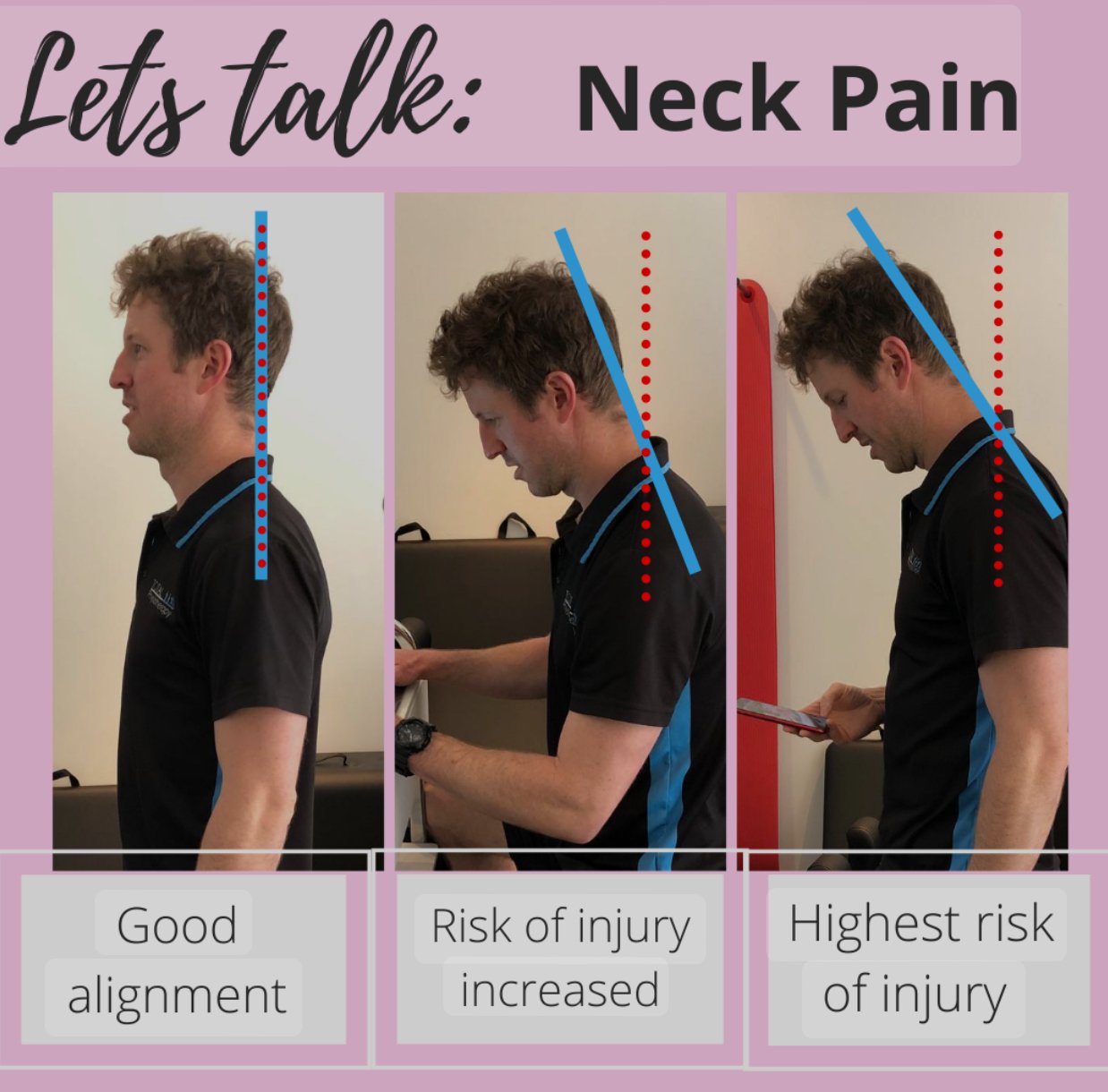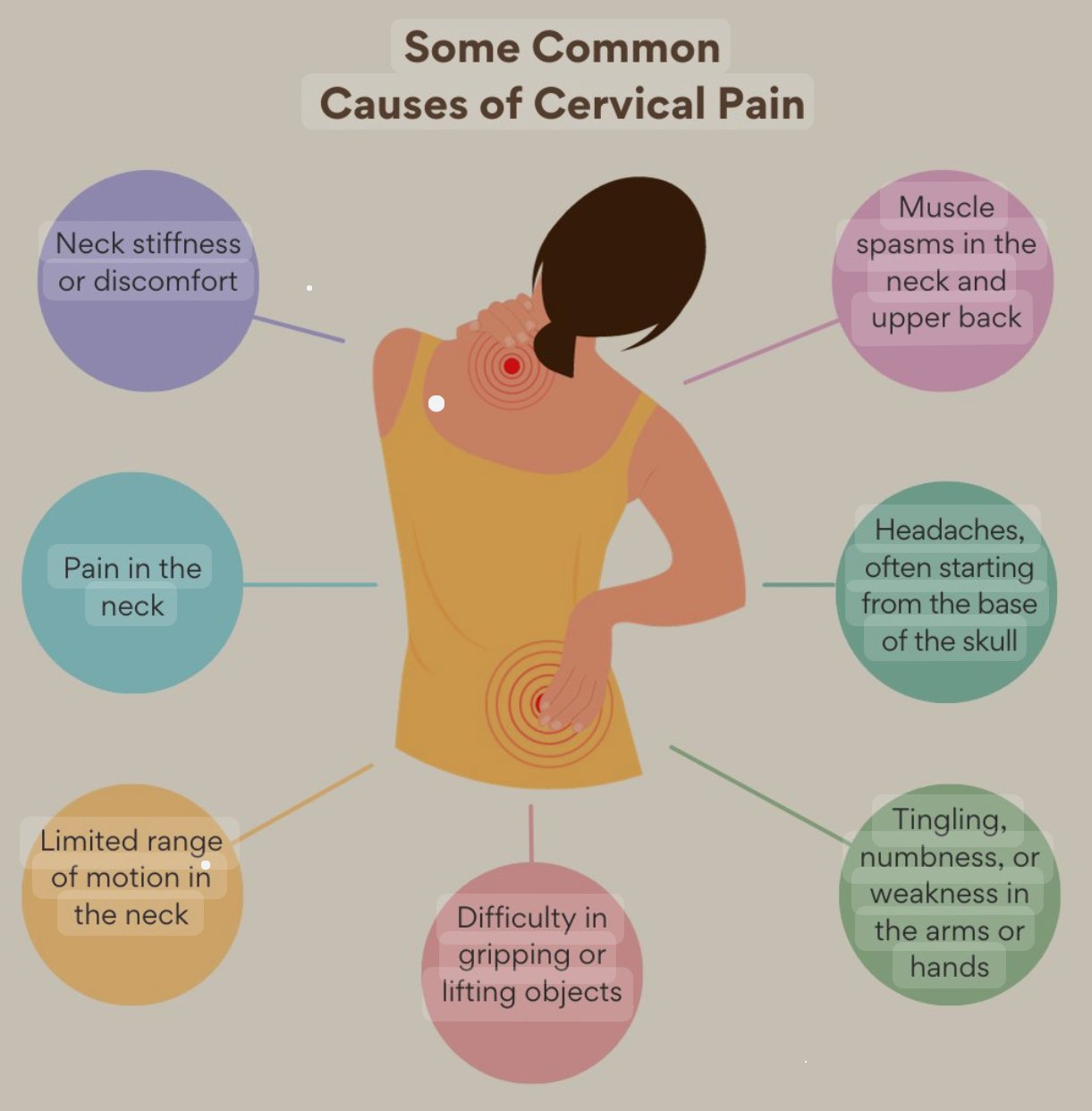Why cervical problem rapidly increases in United Arab Emirates?
The rapid increase in cervical problems in the United Arab Emirates (UAE) can be attributed to several factors:

1. Sedentary Lifestyle:
– Modern Work Culture: Many people in the UAE have desk jobs that require long hours of sitting, often with poor posture. Cervical spine problems and neck discomfort may result from this.
– Lack of Physical Activity: With the hot climate, people may avoid outdoor activities, leading to a sedentary lifestyle which contributes to musculoskeletal problems.
2. Technological Advancements:
– Increased Screen Time: The widespread use of smartphones, tablets, and computers has led to prolonged periods of looking down or forward, causing “tech neck” and straining the cervical spine.
3. Urbanization and Infrastructure:
– Traffic and Commuting: Long commuting times in traffic can lead to poor posture while driving, contributing to neck pain.
– High-Stress Environment: Rapid urbanization and the fast-paced lifestyle can lead to increased stress, which often manifests as tension in the neck and shoulders.
4. Ergonomic Issues:
– Workplace Ergonomics: Many offices may not have ergonomically designed furniture, which can lead to improper sitting posture and cervical problems.

– Home Ergonomics: Lack of ergonomic setups at home, especially with the rise in remote work, can also contribute to neck issues.

5. Healthcare Awareness and Access:
– Increased Reporting: Greater awareness and access to healthcare facilities mean more people are getting diagnosed and treated for cervical problems.
– Preventive Measures: There may be a lack of preventive measures and public health initiatives focused on ergonomics and physical activity.
6. Diet and Lifestyle Factors:
– Obesity and Poor Diet: A diet high in processed foods and a lack of physical exercise can contribute to obesity, which in turn can cause musculoskeletal problems, including those in the cervical region.
– Cultural Habits: Certain cultural habits, such as sitting on the floor or specific sleeping positions, might also contribute to neck issues.
Increasing workplace ergonomics, boosting public health awareness, encouraging regular breaks and good posture during work and screen time are just a few of the many ways that these concerns can be addressed.

How many active cervical cases are there in the United Arab Emirates?
As of recent data, specific numbers for current active cases of cervical cancer in the United Arab Emirates (UAE) are not readily available. However, the incidence and management of cervical cancer in the region have been topics of significant concern In 2018, the UAE reported around 93 new cases of cervical cancer annually【22†source】【23†source】.
In the UAE, efforts are being made to address the problem of cervical cancer through raising awareness, encouraging HPV vaccination, and enhancing screening initiatives. Cervical cancer risk has been lowered in large part through HPV vaccination, which primarily targets girls between the ages of 9 and 14. Additionally, regular screening for cervical cancer starting from age 30, or from age 25 for women living with HIV, helps in early detection and treatment of precancerous lesions【21†source】.
In order to lower the incidence of cervical cancer in the United Arab Emirates, it is imperative to increase public awareness of the value of vaccinations and routine screenings as well as to improve access to these preventivities.
How is the cervical issue going to be solved?
A multimodal strategy encompassing several stakeholders, such as healthcare providers, employers, educators, and individuals, is needed to address the rise in cervical disorders in the United Arab Emirates.Here are some strategies:
1. Public Health Campaigns:
- Awareness Programs: Educate the public about the importance of good posture, regular physical activity, and ergonomic practices.
- Workshops and Seminars: Organize sessions in workplaces and communities to teach proper ergonomics and exercises for neck health.
2. Workplace Interventions:
- Ergonomic Assessments: Conduct ergonomic assessments in offices to ensure that workstations are set up to minimize neck strain.
- Standing Desks and Breaks: Encourage the use of standing desks and regular breaks to reduce prolonged sitting.
- Employee Wellness Programs: Implement wellness programs that include neck exercises, stretching routines, and stress management techniques.
3. Technology and Screen Time Management:
- Screen Time Education: Provide guidelines on limiting screen time and adopting proper viewing angles for devices.
- Tech Breaks: Encourage regular breaks from screen use to reduce strain on the neck.
4. Healthcare Services:
- Physical Therapy and Rehabilitation: Increase access to physical therapy services that focus on neck health and rehabilitation.
- Regular Check-Ups: Promote regular check-ups with healthcare providers to catch and treat cervical issues early.
5. School-Based Programs:
- Posture Education: Integrate posture and ergonomics education into school curriculums.
- Physical Activity: Encourage physical activity and reduce sedentary behavior among students.
6. Community Initiatives:
- Fitness Programs: Promote community fitness programs and exercise groups that focus on overall musculoskeletal health.
- Public Facilities: Provide public facilities and spaces for physical activity, such as parks and recreational centers.
7. Policy and Regulation:
- Occupational Health Standards: Enforce regulations that require employers to maintain ergonomic work environments.
- Health Incentives: Provide incentives for organizations that implement effective workplace health programs.
8. Research and Data Collection:
- Ongoing Research: Support research on the prevalence and causes of cervical problems in the UAE to inform targeted interventions.
- Data Analysis: Use data to monitor the effectiveness of interventions and adjust strategies as needed.
Individual Responsibility:
- Posture Awareness: Be mindful of maintaining good posture during daily activities.
- Regular Exercise: Engage in regular physical activity, including exercises that strengthen neck and back muscles.
- Stress Management: Practice stress management techniques such as yoga, meditation, or deep breathing exercises to reduce muscle tension.
The United Arab Emirates might mitigate the rising prevalence of cervical issues and enhance the general musculoskeletal well-being of its populace by merging these tactics.
